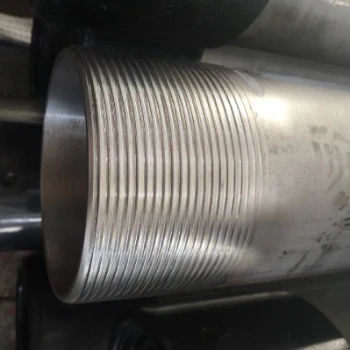- Afrikaans
- Albanian
- Amharic
- Arabic
- Armenian
- Azerbaijani
- Basque
- Belarusian
- Bengali
- Bosnian
- Bulgarian
- Catalan
- Cebuano
- Corsican
- Croatian
- Czech
- Danish
- Dutch
- English
- Esperanto
- Estonian
- Finnish
- French
- Frisian
- Galician
- Georgian
- German
- Greek
- Gujarati
- Haitian Creole
- hausa
- hawaiian
- Hebrew
- Hindi
- Miao
- Hungarian
- Icelandic
- igbo
- Indonesian
- irish
- Italian
- Japanese
- Javanese
- Kannada
- kazakh
- Khmer
- Rwandese
- Korean
- Kurdish
- Kyrgyz
- Lao
- Latin
- Latvian
- Lithuanian
- Luxembourgish
- Macedonian
- Malgashi
- Malay
- Malayalam
- Maltese
- Maori
- Marathi
- Mongolian
- Myanmar
- Nepali
- Norwegian
- Norwegian
- Occitan
- Pashto
- Persian
- Polish
- Portuguese
- Punjabi
- Romanian
- Russian
- Samoan
- Scottish Gaelic
- Serbian
- Sesotho
- Shona
- Sindhi
- Sinhala
- Slovak
- Slovenian
- Somali
- Spanish
- Sundanese
- Swahili
- Swedish
- Tagalog
- Tajik
- Tamil
- Tatar
- Telugu
- Thai
- Turkish
- Turkmen
- Ukrainian
- Urdu
- Uighur
- Uzbek
- Vietnamese
- Welsh
- Bantu
- Yiddish
- Yoruba
- Zulu
Exploring the Benefits of Steel Couplings in Modern Engineering Applications
Understanding Steel Couplings An Essential Component in Mechanical Engineering
Steel couplings are integral components in mechanical engineering, playing a crucial role in transmitting torque and connecting different parts of machinery. Their importance is underscored by their wide range of applications, from industrial machinery to automotive systems. Understanding the function and types of steel couplings is essential for engineers seeking to optimize the performance and durability of mechanical systems.
At its core, a steel coupling is designed to connect two shafts, allowing rotational motion to be transferred between them
. This connection can accommodate misalignments, absorb shocks, and reduce vibrations in the system, which is vital for maintaining the operational integrity of machinery. The coupling must be capable of handling various stresses while ensuring a dependable connection without excessive wear or failure.There are several types of steel couplings, each serving a unique purpose and application. The most common types include rigid couplings, flexible couplings, and adjustable couplings.
Rigid couplings are used when precise alignment is necessary, and they do not permit angular or axial misalignment. These couplings deliver high torque transmission but can be susceptible to stress if the connected shafts are not perfectly aligned. They are best suited for applications where shaft alignment is guaranteed.
steel coupling

Flexible couplings, on the other hand, can accommodate misalignments and are ideal for applications where slight deviations may occur. They typically consist of materials that can flex or twist, allowing them to absorb shocks and dampen vibrations. This feature is particularly useful in environments where machinery experiences varying loads or fluctuating operational conditions. Common materials used in flexible couplings include rubber and polyurethane, which provide excellent damping properties.
Adjustable couplings offer versatility, allowing users to modify the coupling as needed. These are particularly useful in applications where the distance between shafts might change or where adjustments are frequent. With adjustable couplings, engineers can ensure that torque is efficiently transmitted without the need for complete replacement, enhances the overall longevity of the machinery.
When selecting a steel coupling, several factors must be considered, including the size of the shafts, the type of load they will bear, and the operational environment. The correct material choice, which often includes various grades of steel, is also crucial. High-strength steel is typically favored for its durability and ability to withstand considerable stress, ensuring that the coupling performs optimally over time.
In conclusion, steel couplings are vital components in enhancing the performance and reliability of mechanical systems. With different types available to suit various applications, selecting the right coupling can significantly impact the machinery's overall efficiency. Understanding the properties and applications of steel couplings is therefore essential for engineers, ensuring that they can achieve their design goals while maintaining operational excellence. As technology evolves, innovations in coupling designs will likely continue to emerge, further improving the performance and functionality of mechanical systems worldwide.
-
Tubing Pup Joints: Essential Components for Oil and Gas OperationsNewsJul.10,2025
-
Pup Joints: Essential Components for Reliable Drilling OperationsNewsJul.10,2025
-
Pipe Couplings: Connecting Your World EfficientlyNewsJul.10,2025
-
Mastering Oilfield Operations with Quality Tubing and CasingNewsJul.10,2025
-
High-Quality Casing Couplings for Every NeedNewsJul.10,2025
-
Boost Your Drilling Efficiency with Premium Crossover Tools & Seating NipplesNewsJul.10,2025







